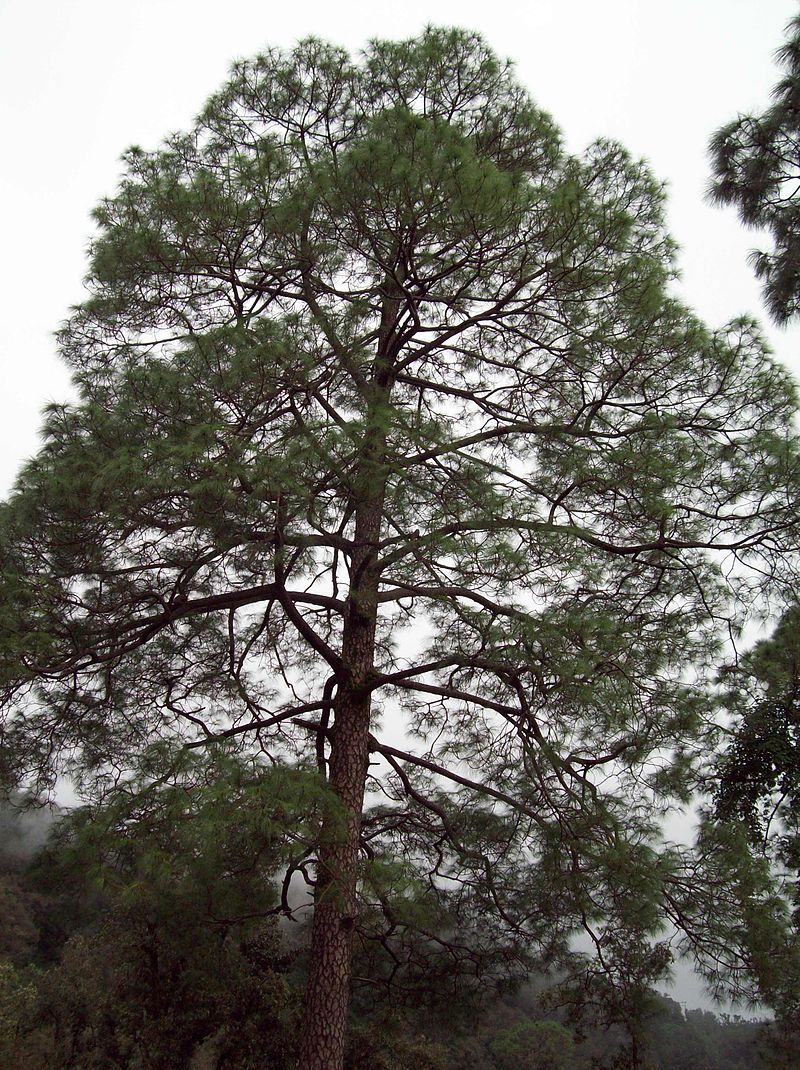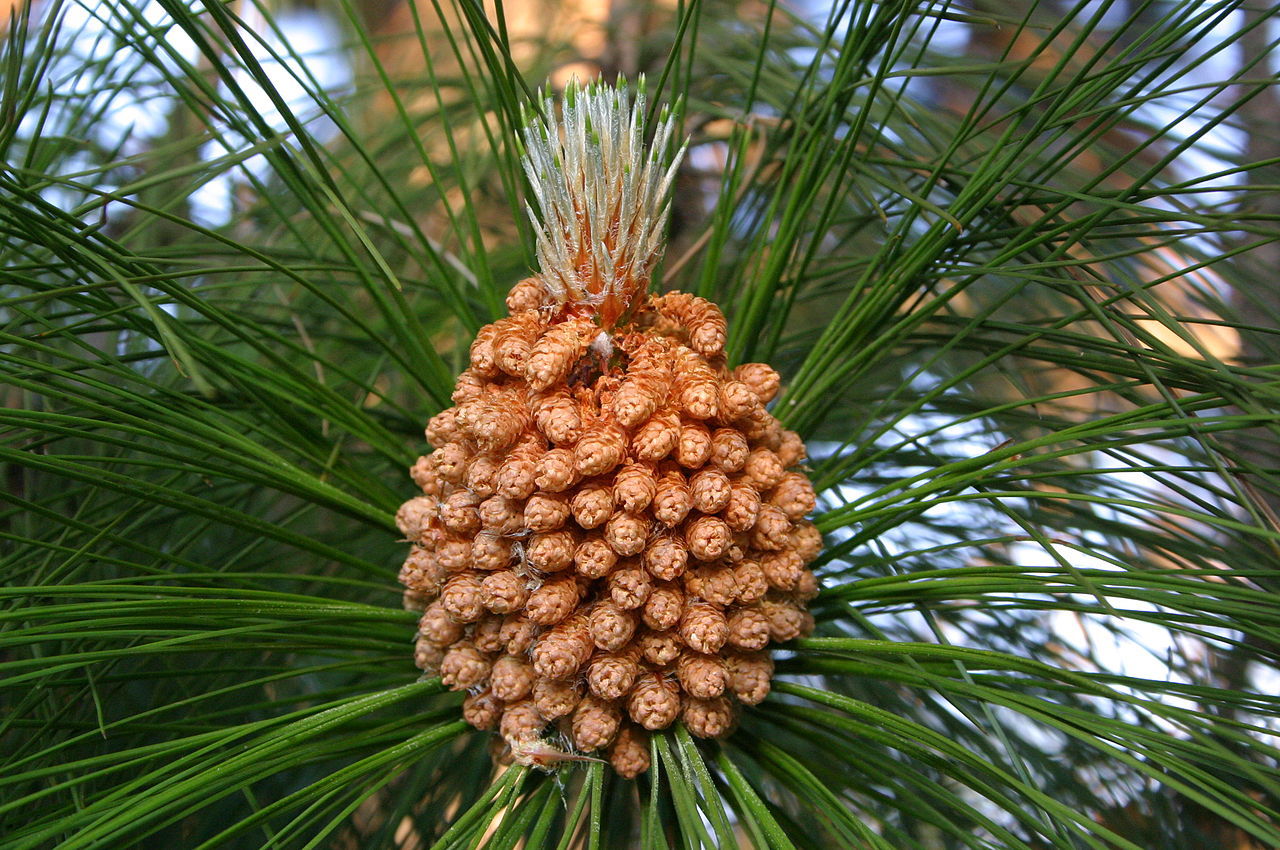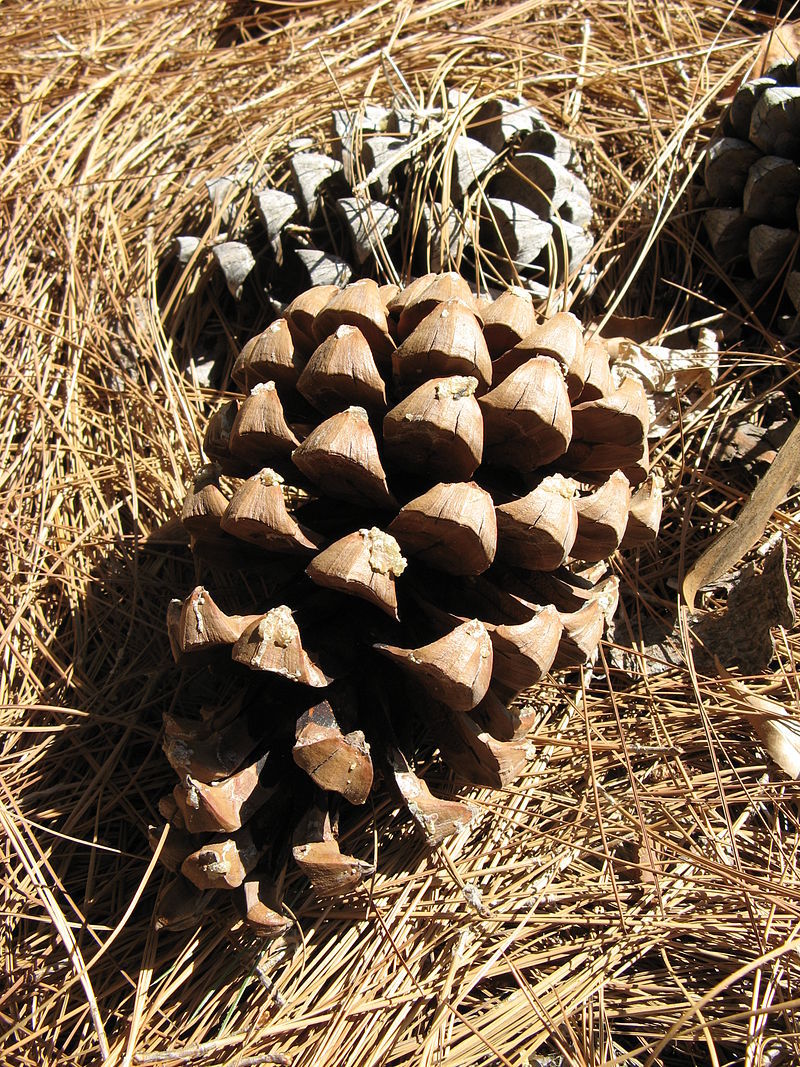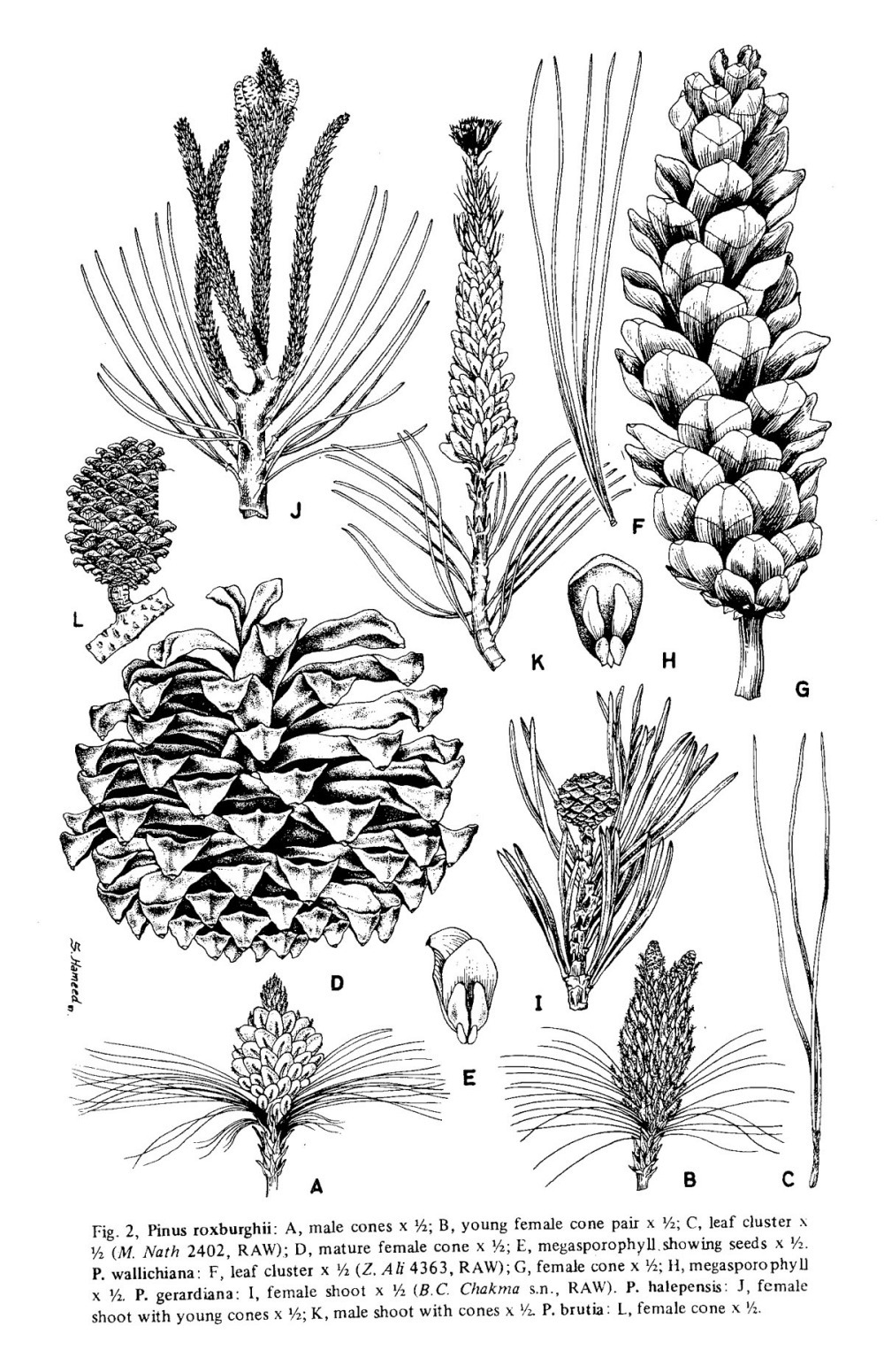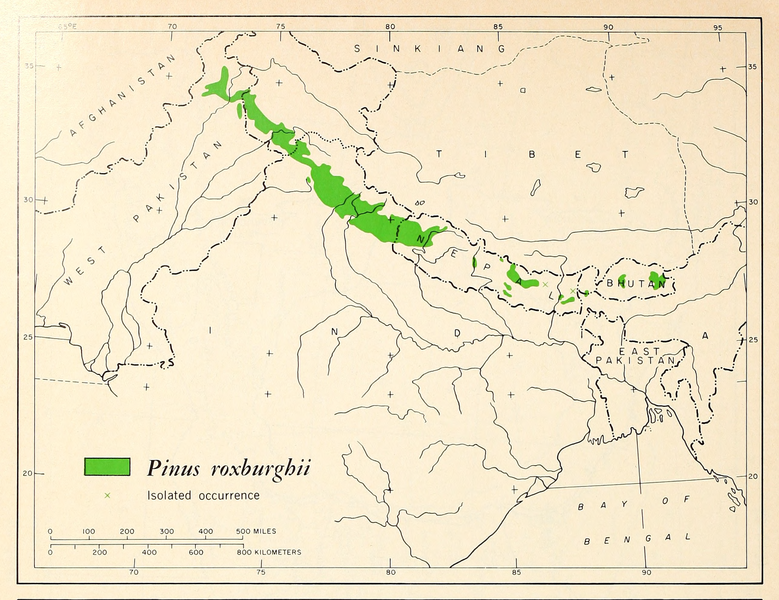subgenus Pinus, section Pinus, subsection Pinaster (Mayr ex Koehne).

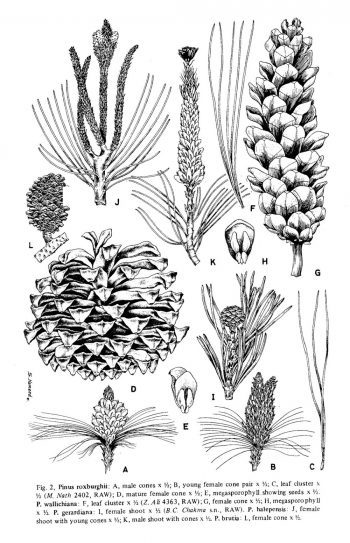
Pinus roxburghii, as described in 1897 by Charles Sprague Sargent (1841-1927), in The Silva of North America, vol. 11:9, is commonly known as Chir pine, Indian long-leaf pine or Imodi pine; as well as, चà¥'ड (chir) in the Hindi language; as 西è—é•¿Š¶æ¾ (xu mi chang ye song) in Chinese; as ചരളം in Malay; as Khote sallo in Nepali; and as Sarala in Sanskrit. The species name honors William Roxburgh (1751 - 1815), a Scottish surgeon and botanist who worked extensively in India, describing species and working on economic botany. He is known as the founding father of Indian botany.
Ethnobotany. The timber is used for construction, furniture, etc., and the trunk as a source of resin.
Description. Chir pine is an evergreen, coniferous species of tree that grows to mature heights of 180 feet (55 m) with a trunk over 60 inches (100 cm) in diameter, measuring at breast height; and an open, shallow, dome-shaped crown.
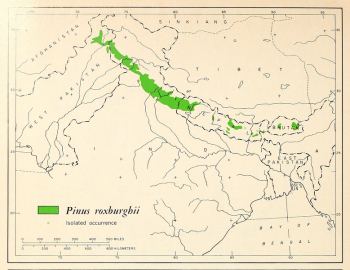
Distribution. This species is native to the Himalayan mountains - Bhutan; India - Jammu and Kashmir, Punjab, Himanchal Pradesh, Uttarakhand; Nepal; Pakistan; Sikkim; Afghasistan; and southern Tibet; growing in the mountains at elevations of 1,500 to 7,500 feet (450 - 2300 m) above sea level. It is limited to the monsoon belt between 72° and 95°E and 27° and 35°N. Within its range, it is not only a common species, but is also the most widely planted conifer, comprising 17% of the forested area of Nepal.
Hardy to USDA Zone 9 - cold hardiness limit between 20° and 30°F (-6.6° and -1.1°C).
